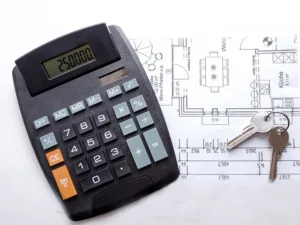Table of Contents
Handling construction change orders can present a complex challenge, yet with the right strategies, it can be managed efficiently. Adopting the proper practices is key to reducing the influence of project alterations on aspects like timelines, budgets, and overall quality. The following are nine essential best practices to ensure effective management of construction change orders:
1. Establish Fair and Practical Terms for Construction Change Orders
A key aspect of effectively managing construction change orders is creating fair and clear contract terms. It is very important to define the project’s scope in detail and explicitly in the contract documents. This clarity not only helps prevent misunderstandings and disputes over change orders but also ensures a common understanding among all parties involved. There is a tendency among many large owners and developers to negotiate contracts that tilt the responsibility for change payments in their favor. To combat this, contractors must be vigilant to negotiate fair and transparent contract language. This is not only about maintaining balance and fairness in contractual relationships; it is also a practical necessity. Courts are often reluctant to enforce contractual provisions that appear unfair or one-sided. Therefore, having a comprehensive and easy-to-understand contract is not only helpful in maintaining good relations with clients but is also important for ensuring legal compliance. This approach reduces the risk of disputes and contributes to the smooth implementation of the project.
2. Know Your Original Contract and Identify Issues Before You Begin
Before starting any project, it is imperative to understand the change order process outlined in the contract thoroughly. This includes knowing the specific timelines, formats, and approval procedures for submitting change orders. Prompt attention to these details is critical. In addition, proactive review of project plans and specifications is essential to identify and resolve ambiguities, errors, omissions, or conflicts. Proactively submitting change orders early on is critical, as delays can lead to cost overruns, schedule disruptions, and potential owner-contractor conflicts. A thorough knowledge of the original contract is also important. Understanding the agreed scope of work allows for a more accurate assessment of the impact of proposed changes, including feasibility and potential additional costs. This comprehensive approach ensures a smoother workflow and helps you make informed decisions about changes.
3. Have a Process in Place
To effectively manage change orders in any project, it’s crucial to have a well-defined process in place from the outset. This prepares you for the inevitable adjustments that occur in almost every project and helps maintain harmony with contractors, budgets, and schedules. Establishing a change order log is essential in organizing this process. Construction change order software can further streamline the creation and tracking of these orders. Proactively incorporating change order procedures into initial contracts ensures transparency and sets clear expectations for all parties involved. This approach involves detailing the initiation and execution of change orders and their potential impact on timelines and costs. Seeking legal assistance in this process can provide additional protection for your business. It’s important to remember that while change orders are a familiar concept in the industry, they might be new to clients. Therefore, educating them about the process through previous examples and thorough explanations is vital, leaving no questions unanswered. This dual focus on preparedness and clear communication safeguards your business interests and establishes a transparent and understandable workflow for clients.
4. Agree on Costs Before Proceeding with the Work
It’s crucial to recognize that change orders will affect the overall project budget. To avoid any complications, it’s essential to precisely identify and mutually agree upon the costs associated with these changes beforehand. There may be instances where minor alterations are perceived as being encompassed within the original project scope. However, to ensure clarity and avoid misunderstandings, all parties involved must have a unified understanding and agreement regarding any additional work and its associated costs before proceeding with the implementation.
5. Establish Pricing Guidelines
When an owner signs a contract with a contractor, it waives the opportunity to seek competitive bids from others. This situation gives the contractor autonomy in pricing change orders. In such a scenario, the owner may suspect overcharging, often due to concerns that the contractor may seek to offset losses in other project areas or seek profits through modifications. To avoid these problems, it is important to include comprehensive pricing details in your contract. It should include a clear breakdown of labor costs, profit margins, overheads, and markup rates associated with the project. By doing this, you create a transparent pricing structure that allows you to prevent and resolve disputes with exchange order costs, ensuring a fair and agreed-upon standard for both parties.
6. Ensure Proper Documentation for Change Orders
The importance of putting every aspect of change orders in writing cannot be overstated. This means carefully documenting every detail, including scope of work, cost implications, and schedule adjustments. Both parties should sign the change order, and keeping a copy of every change order is important. Written documentation of change orders protects against misunderstandings and disputes by providing a clear and reliable reference for future inquiries or issues. Relying only on verbal agreements is risky because they tend to be forgotten or misinterpreted. In addition, having a comprehensive written contract ensures legal protection for all parties involved. By integrating these practices with construction management tools like Bauwise, change orders can be managed more efficiently and effectively. This approach ensures clear communication, thorough documentation, and a smooth process, contributing to the smooth running of construction projects and maintaining customer satisfaction. Remember, a verbal agreement or handshake can start the process, but putting decisions in a written change order is critical to avoid miscommunication and ensure mutual understanding and agreement.
7. Have Strategies for Conflict Resolution
Interruptions and delays often lead to change order conflicts, primarily when contractual payment terms require contractors to implement changes without immediate compensation adjustments. Such terms typically favor the project owner, placing a significant financial burden on contractors. This situation can create a tense environment that can often turn into arguments. In order to proactively resolve such conflicts and reduce their likelihood, it is useful to include specific clauses in your contracts. One effective approach is to include a provision whereby the owner agrees to cover a certain proportion (e.g., 50%) of the costs associated with change order disputes during the construction phase. In addition, it is important to clarify that both sides have the right to dispute any issue. This approach provides financial fairness and provides a framework for amicable dispute resolution.
8. Track Changes in Real-Time with Construction Change Order Software
Effective management of change orders requires real-time monitoring, which is integral to effectively monitoring their impact. Once a change order is approved, entering it into your construction management software is critical. This practice allows continuous monitoring of its impact on the project schedule and budget, facilitating timely changes when necessary.
Real-time monitoring also plays a central role in quickly identifying and addressing potential issues or delays due to change queues, allowing preventative measures to be taken before these challenges escalate.
Software solutions like Bauwise track change orders in real time, ensuring you and your team are constantly updated. This capability enables seamless tracking of change orders from any location at any time, ensuring all team members can access the most up-to-date information. By leveraging real-time monitoring capabilities, you can maintain a proactive attitude toward change orders, effectively avoiding unforeseen setbacks that could jeopardize the success of your project.
9. Communicate clearly and quickly
As a general contractor, I’ve learned how important it is to communicate clearly and often with my clients and team. When something changes, especially if it costs more, I need to tell my clients right away. Waiting only makes things worse. If I don’t tell them until the very end, they might be surprised and upset, and I might even have to pay those extra costs myself to keep a good relationship with them. That’s not good for anyone.
I make sure to use software that helps me send updates automatically whenever there’s a change. This way, my clients and my team always know what’s happening, and nobody gets a surprise bill at the end.
I also have regular meetings with everyone involved in the project, like the client, my team, and subcontractors. We meet at the start, during, and at the end of the project to make sure everyone knows what’s going on.
Lastly, I always get someone else to review the plans and important papers. This could be someone from my team or an outside expert. They helped ensure we didn’t miss anything or make mistakes, keeping the project going smoothly and helping us avoid problems later.
For additional reading, here is a document of best practices for change orders.
Written by

Taavi Kaiv
Taavi Kaiv is a construction specialist with over ten years of experience in the construction industry. Taavi is an accomplished construction project manager with many successful projects that have been completed under his guidance. Taavi holds a master’s degree in construction management from the Tallinn University of Technology. View profile
Related content
Read our other articles where you can find helpful and relevant information about construction change orders:






